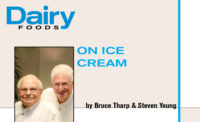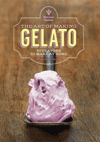Consumer interest in clean labels (that is, the use of ingredients perceived to occur naturally in foods) has created a challenge to ice cream formulators.
Ironically, many ice creams produced before the 1950s would be considered to be clean-label today. Since then, however, supply chains have been extended, exposing ice cream to increasing degrees of temperature abuse (heat shock) and its negative influences on ice cream properties associated with sensory appeal (smooth texture, rich/creamy body, delivery of desirable flavor).
Why ice cream is different
Ice cream is the only food intended to be consumed frozen. Critical functionalities that protect ice cream from the rigors of post-packaging handling are:
- control of the amount and size of ice crystals via the management of freezing point
- managing the behavior of water
- control of fat agglomeration and its influence on a variety of key properties
- development and stability of small air bubbles critical to the perception of creaminess and richness, particularly at high levels of overrun.
Given existing consumer perceptions, the products involved, compositional limitations and other factors, the following three points are key (but not mutually exclusive) considerations.
1. Freezing point management. The more water frozen at any given freezer draw temperature (clearly restricted by desirable flow properties of freshly drawn product), the more and smaller the ice crystals. This helps create smooth/creamy ice cream and manages the ice-to-water-to-ice transitions during distribution.
2. Control of water mobility. As the mobility of unfrozen water is restricted, the more stable are body and texture properties during distribution. A number of “clean-label” ingredient and/or process options exist. These include alternative hydrocolloid systems, novel bulking agents, managing water mobility via selection of amount/type of “pre-conditioned” (via heat treatment) dairy proteins and/or managing heat exposure during mix processing.
3. Fat agglomeration. Phospholipids, such as commercial lecithin, can partially replace the agglomeration control properties of chemically derived emulsifiers (including their role in controlling air bubble size) when used at levels > 0.2%. However, since phospholipids have significant potential for contributing off-flavor due to oxidation of unsaturated fatty acids that dominate their fatty acid profile, evaluation should begin at lower levels. We suggest a level of 0.12%.
Ingredients high in phospholipids can also be useful in agglomeration management. That includes egg yolk solids at a level > 1%. Buttermilk solids can also be useful. Negative influences of spray-drying on the flavor properties of finished buttermilk powder limits its use to < 3%, which is not likely to be effective. Condensed buttermilk is preferable due to lesser exposure to heat and relatively short refrigerated storage time. If a consistent source of condensed buttermilk is available, it could be used as a source of the total supplemental MSNF (milk solids nonfat) component in achieving some degree of fat agglomeration control.
Effects of processing
Management of processing conditions can also be useful in supplementing the effects of ingredients on structure and air bubble size. Higher homogenization pressures have been found to enhance creaminess, richness and control of air bubble size. Pre-aeration of mixes can have a similar effect. Lower freezer draw temperatures associated with the generation of small ice crystals also increase the extent of fat agglomeration, which adds beneficial effects on air bubble size/strength, smoothness, creaminess, richness, flavor delivery and overall, sensory appeal.
A conundrum exists. There is the consumer’s perception that being transparent and understandable is good (i.e., “clean” labeling). There are technical demands of economically delivering ice cream to various points of consumption under varying conditions (which may or may not be wholly compatible with “clean labeling” considerations).
Learn more in Singapore, Las Vegas
To learn more about how ice cream can become more compatible with clean labeling initiatives, the changing regulatory environment and the competitive demands of the marketplace, join Bruce Tharp, Steve Young and new faculty member Arun Kilara at “Tharp & Young on Ice Cream: Technical Short Course, Workshops, and Clinics.” The program is June 12 to 16 in Singapore and Dec. 4 to 5 in Las Vegas.
Class sizes are limited. For registration, discounts, and more, go to www.onicecream.com, or call 610-975-4424 or 281-782-4536.
Purchase “Tharp & Young On Ice Cream, an encyclopedic guide to ice cream science and technology.” Go to http://www.dairyfoods.com/products.







